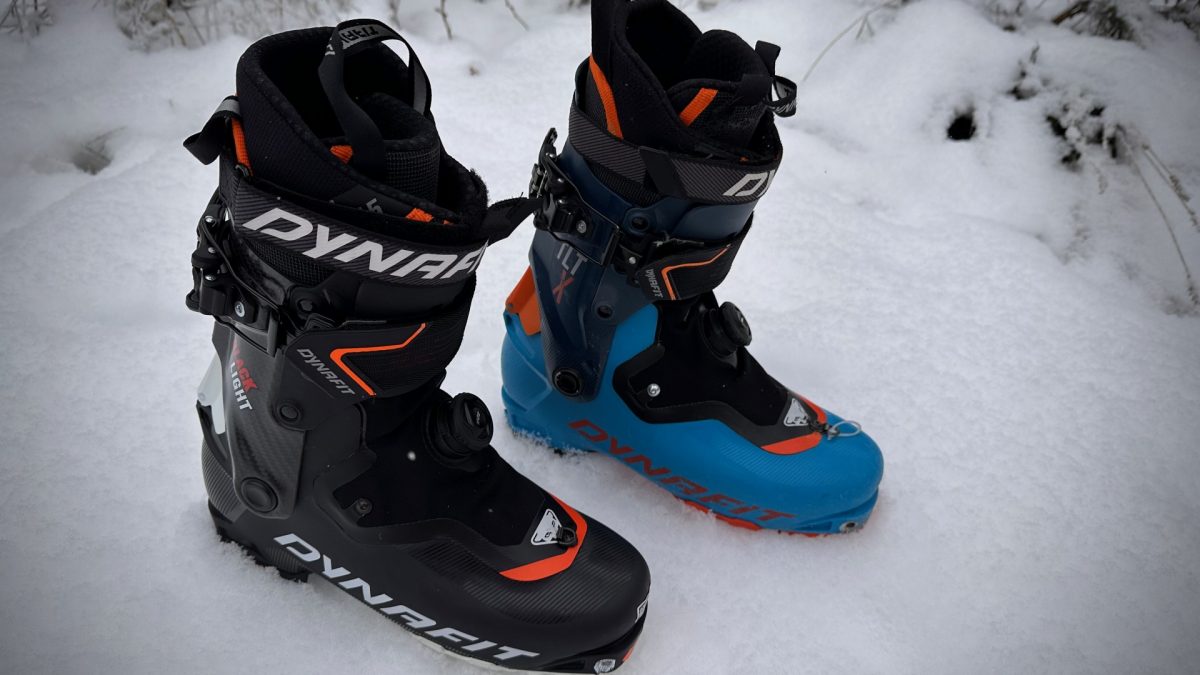
Dynafit has released the carbon-cuffed Blacklight speed touring boot (left); a model similar to the softer TLT X (right).
Dynafit’s speed touring Blacklight brings all the best features of the TLT lineage into a new carbon-cuffed speed touring boot weighing (drum-roll) … around 1kg, depending on the size. These comfortable and capable boots are built for deep missions.
With this first look, like a Wim Hof inspired ice plunge, we’re mindfully jumping fast into the basic stats of Dynafit’s new speed tour model, the Dynafit Blacklight. To the stats.
Blacklight Stats
Weight Blacklight 27.0/27.5 shell w/27.0 liner stock footbed + optional mini-powerstrap: 1118g
For comparison, weight TLT X 27.0/27.5 shell w/27.0 liner stock footbed + optional mini-powerstrap: 1118g
Optional power strap weight: 19g
Lower shell construction: Carbon-infused grilamid
Cuff: Carbon fiber
Boot spoiler: The white on the boot’s rear — Grilamid
Forward Lean: adjustable 15° or 18°
Sole: Pomoca
Liner: Dynafitter 5 (so far, no heat molding necessary)
Sizing: The boots break on the whole size. Meaning the 27.0/27.5 share the same shell (BSL 297). The 27.0 has a slightly smaller liner than the 27.5 (it’s a slightly roomier fit with the 27.5 liners).
Price: $899.95
WildSnow TLT X Coverage
— First look
— Review
— Comparing the TLT 5, TLT 8, and the TLT X
The Flex
The big question, I suppose, many are asking is how is the flex compared to the TLT X? The primary difference between the TLT X and the Blacklight is the Grilamid-fiberglass cuff of the TLT X compared to the Blacklight’s carbon cuff. Boot shells are comprised of an upper and a lower. And the lower shell in the Blacklight is carbon-infused Grilamid, whereas the TLT X is straight sauce Grilamid.
A rainy day carpet test bore some information. I locked into skis, a Blacklight on my left foot, a TLT on the right and leaned aggressively forward: WildSnow video production unit was on-hand to document.
The literal carpet test: Dynafit Blacklight and TLT X.
Initial engagement with the boot, while pushing forward as if to initiate a turn, the Blacklight feels marginally stiffer. Pushing through the initial engagement is where the enhanced stiffness of the Blacklight shows up.
The TLT X’s flex is progressive yet softer than the Blacklight. Pushing all the way through with the shin, the interface of the upper and lower shell on the TLT X begins to flex and bow out slightly as some energy is absorbed and, as a result, makes the flex feel softer.
Conversely, with a strong push-through with the shin in the Blacklight, there’s some bowing at the shell’s upper and lower interface, but markedly less. All this means is that so far, the Blacklight does feel stiffer. In terms of a progressive flex, the Blacklight is progressive, but the range of forward flex (when in ski mode) seems more limited than the TLT X’s; it’s easier to push to the end of the flex range in the TLT X.
Who is this boot for?
Dynafit markets the Blacklight and TLT X as speed tourers. Honestly, I like that classification. I see a speed tourer looking to optimize efficiencies moving in big terrain while sacrificing some stability on the descent— but not much. These boots are not four-buckle big-ski-driving boots. But you know that. They are, however, capable of driving skis 95mm and smaller that are constructed with the uphills in mind (read lighter). I can imagine, on a very soft (like feathery) and light snow day, that a capable skier could use the Blacklight or TLT X to push a wide powder ski. The Blacklight might provide the added stiffness you want to pull this off.
Those eyeing spring traverses, far-away steep lines, resort uphilling, and simply the means to move faster, either boot works great — the Blacklight will ski slightly stiffer than the TLT X.
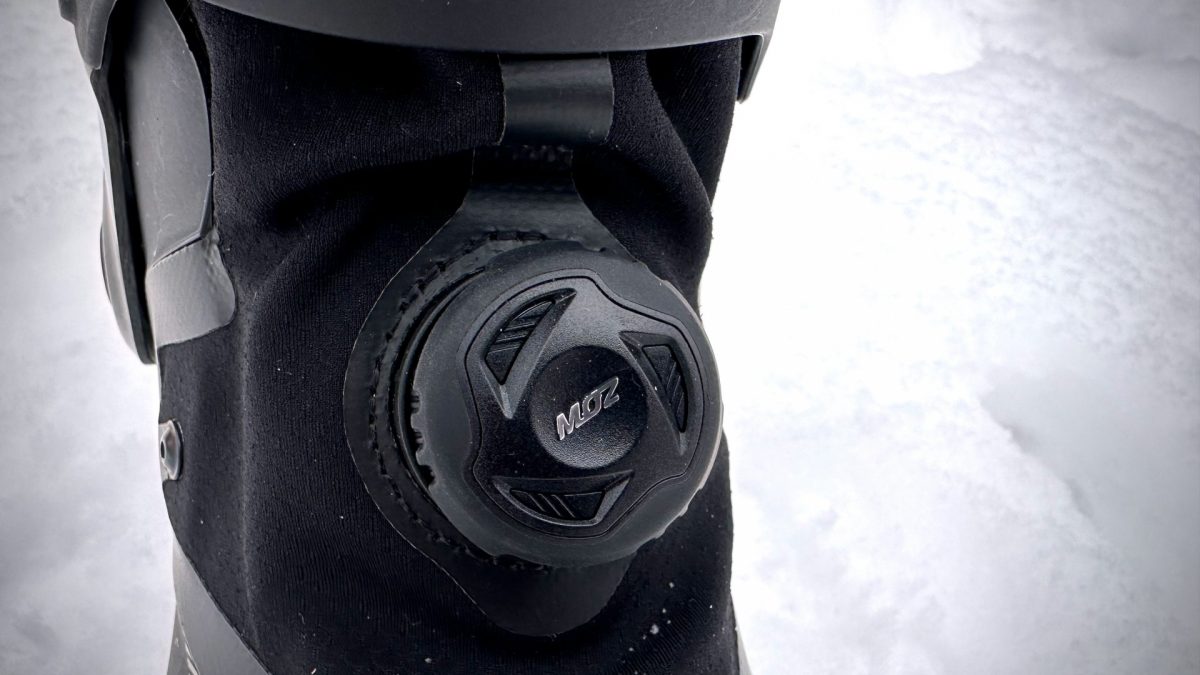
Like the TLT X and other racing boots in the Dynafit line, the Blacklight employs a Twistfit system to secure the lower shell.
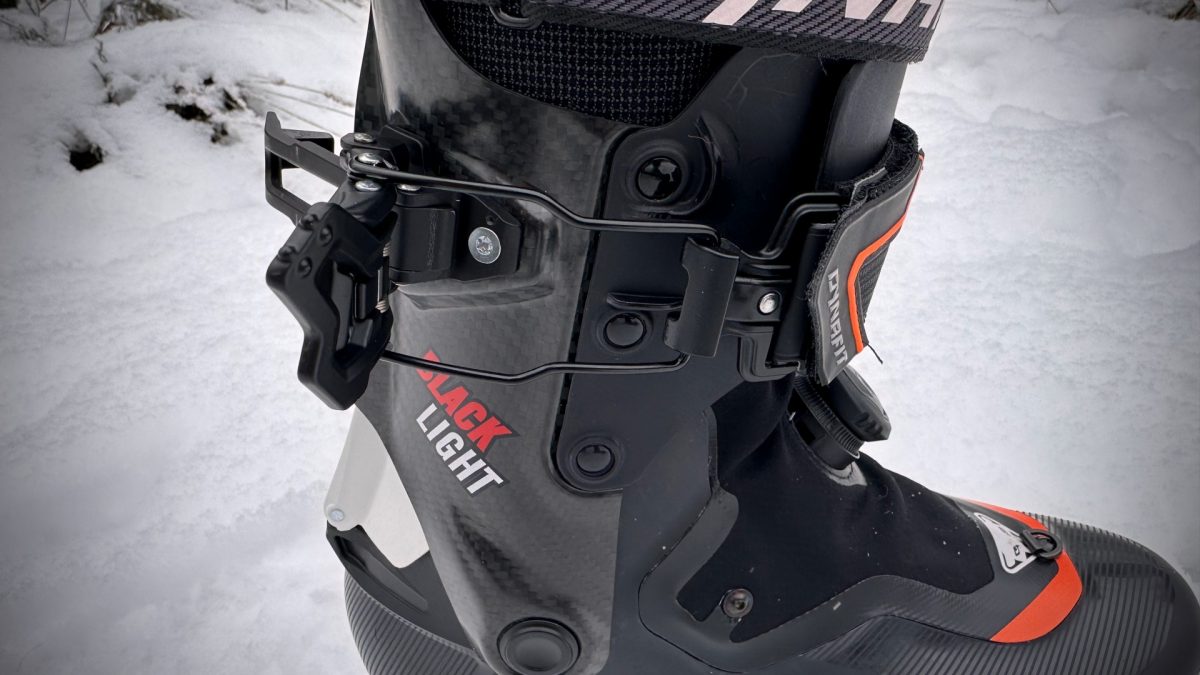
The upper is stiffened with a carbon cuff and a buckle-strap with an optional mini-power strap to top it off.
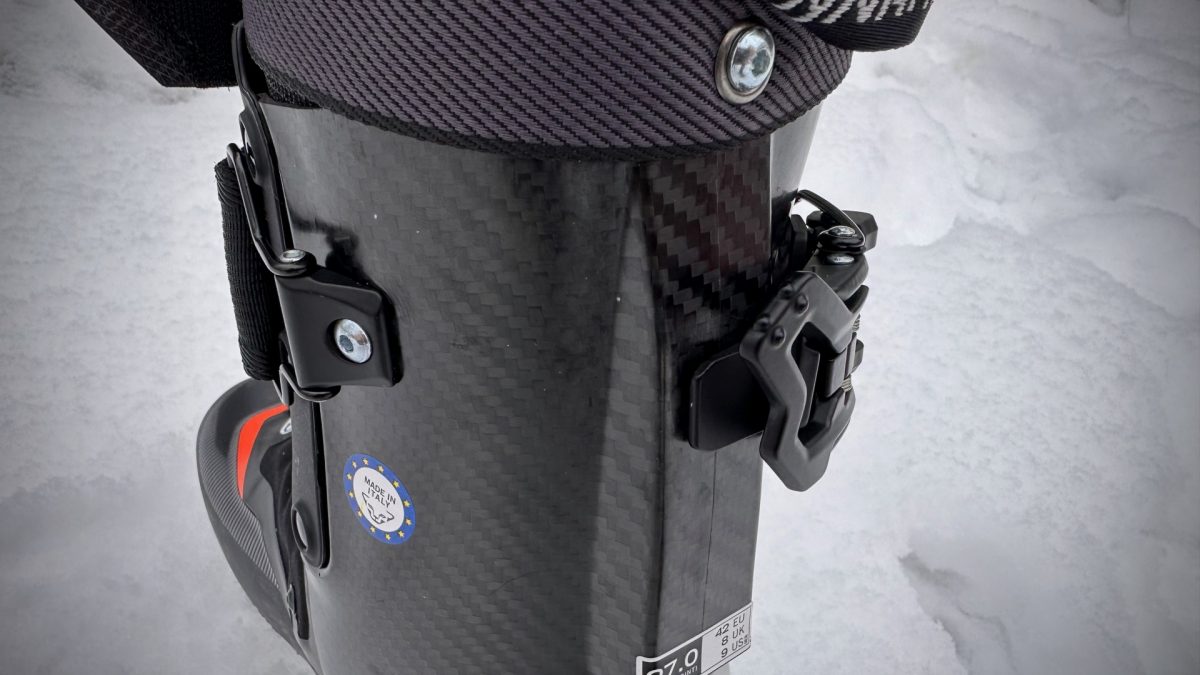
The Ultra Lock 5 Walk Mode is easy to use and time tested. Throw the buckle open, maybe loosen some velcro, and start skinning.
Fit
I like where Dynafit has gone with fit. The instep, for me, is neither too high nor too low. And from what I gather, the instep has a range suitable to many foot types. There’s room to add a more supportive aftermarket insole if need be. The last, at a claimed 101mm, is sufficiently wide, with the toe box allowing room for toes to spread out comfortably. Again, the liner is heat moldable. And with carbon-infused Grilamid, it can be punched, but bring it to a trusted bootfitter who has experience working with the material; better safe than sorry, as this stuff can be touchy when heated.
I’ll call my heel pretty average. Like I did with the TLT X, using an EZ-Fit heel sock takes up the extra heel volume I don’t need; the Blacklight has room for wide heels. All in all, Dynafit has built a very comfortable boot that can accommodate foot swelling on those epic tours.
Similarities and Differences
Beyond the cuff and flex, the similarities with the TLT X are many. There’s a BOA-like closure called the Twistfit. The Twistfit tightens over an internal plastic plate that, when the system is tightened, snugs firmly over the instep and draws the heel back. The design also provides ample sensitivity for micro-adjustments. I tend to loosen the Twistfit during transitions from skiing to skinning.
Both boots have a claimed 60-degrees range of motion, which, personally, I think Dynafit is underselling. The ROM feels near frictionless and many degrees beyond 60. They are superb uphilling boots.
I’ve skied plenty with the TLT X, including a six-day traverse. The boots were great. The assumption is that the Blacklight will handle efforts like that similarly. The most notable differences are the cuff material and the color scheme, and the flex pattern. A small difference is the upper mini-powerstrap affixes to the Blacklight with two small screws, whereas the same strap on the TLT X does not use screws.
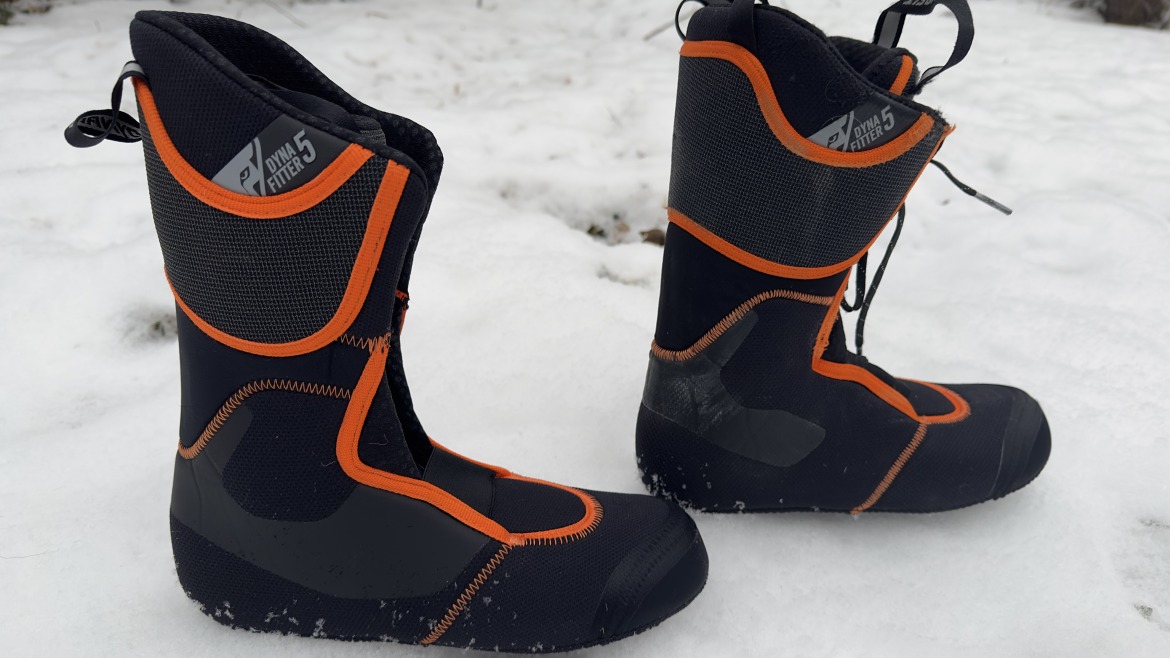
Both boots have heatmoldable Dynafitter liners made for speed touring. This means thinner foam and built-in flex. The Blacklight on the left has slightly different reinforcements for high wear zones than the TLT X’s liner on the right. The Blacklight does not hav e eyelets for laces.
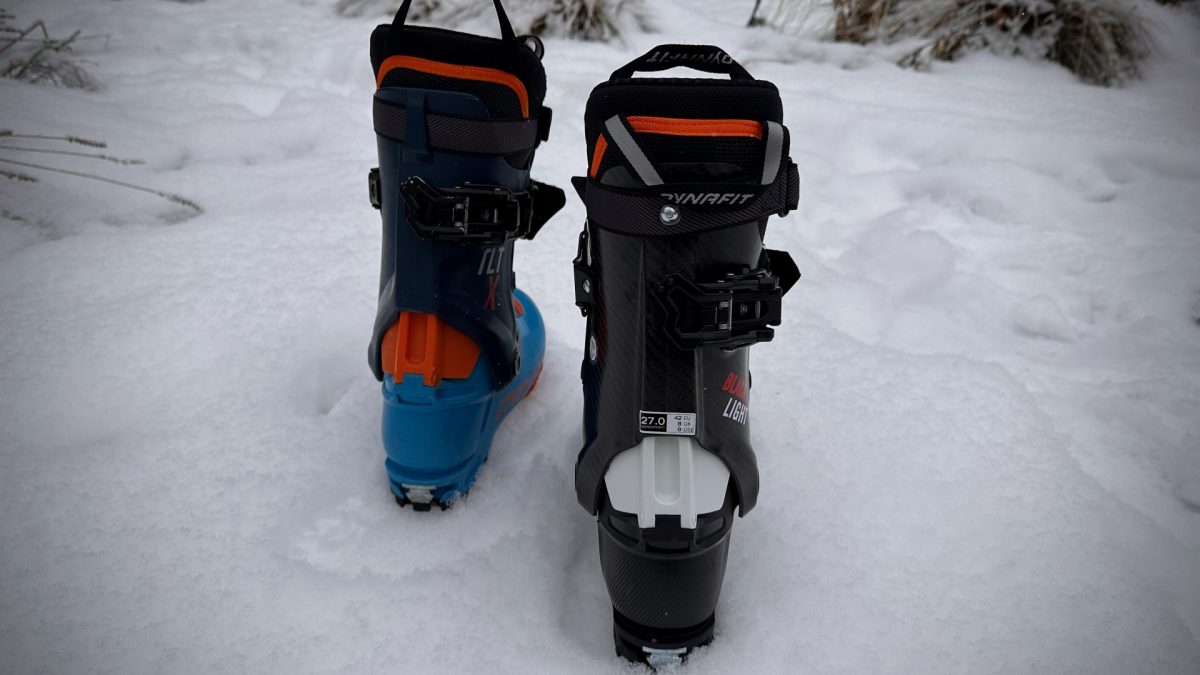
The boot’s rear’s are near identical too. The optional mini-powerstrp secures with a screw on the Blacklight, where’s as the TLT X has a molded fitting to secure the strap.
The liners, which appear near identical, have slightly different patterns for reinforcements in the high-wear zones. (See photo). The Blacklight’s stock liner is laceless, while the TLT X liner that showed up last spring has lace eyelets.
And there’s the price; you’ll pay about $100 more for the carbon cuff and carbon-infused Grilamid. The quality of the carbon cuff’s build so far seems exceptional and durable. More on the Blacklight later this season.
Shop for the Dynafit Blacklight.
Jason Albert comes to WildSnow from Bend, Oregon. After growing up on the East Coast, he migrated from Montana to Colorado and settled in Oregon. Simple pleasures are quiet and long days touring. His gray hair might stem from his first Grand Traverse in 2000 when rented leather boots and 210cm skis were not the speed weapons he had hoped for. Jason survived the transition from free-heel kool-aid drinker to faster and lighter (think AT), and safer, are better.
